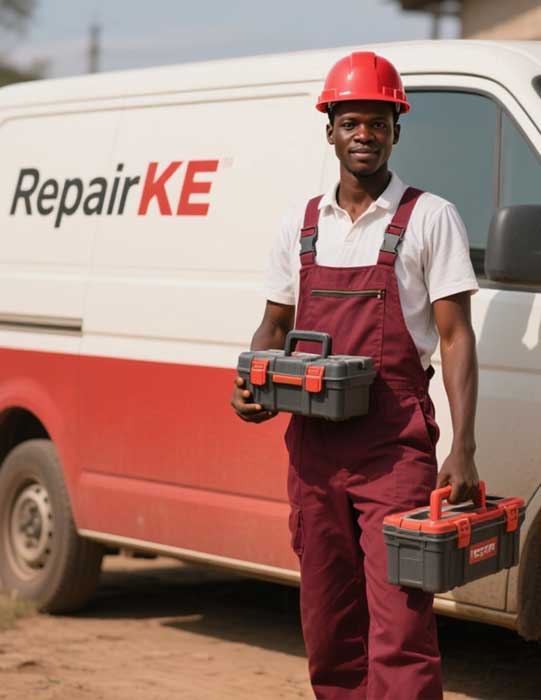
Air Purifier Problems and Their Repair Solutions
Air purifiers are essential devices for maintaining clean indoor air, especially in environments with high pollution, allergens, or dust. However, like any appliance, air purifiers can develop issues that affect their performance. This article explores common air purifier problems, their causes, and practical repair solutions to keep your device running efficiently.
1. Air Purifier Not Turning On
Problem Description
One of the most frustrating issues is when an air purifier fails to power on. The device may not respond to the power button, and no lights or sounds indicate it’s operational.
Possible Causes
- Power Supply Issues: A faulty power cord, loose plug, or tripped circuit breaker.
- Internal Fuse Failure: A blown fuse within the unit due to power surges.
- Control Panel Malfunction: A defective control board or damaged buttons.
Repair Solutions
- Check Power Connections: Ensure the power cord is securely plugged into a working outlet. Test the outlet with another device to confirm it’s functional. If the cord is damaged, replace it with a manufacturer-approved cord.
- Inspect the Fuse: If comfortable with electronics, unplug the unit and check the internal fuse (refer to the user manual for location). Replace a blown fuse with one of the same rating. If unsure, consult a professional technician.
- Reset the Device: Some models have a reset button or require unplugging for 10–15 minutes to reset the system. Check the manual for specific instructions.
- Contact Support: If the control panel is faulty, contact the manufacturer for repair or replacement, as this often requires specialized parts.
2. Reduced Airflow or Weak Performance
Problem Description
The air purifier may run but produce weak airflow, failing to clean the air effectively. You might notice lingering odors or increased dust in the room.
Possible Causes
- Clogged Filters: Dirty or overdue filters restrict airflow.
- Blocked Air Vents: Dust or debris obstructing the intake or output vents.
- Fan Motor Issues: A worn-out or malfunctioning fan motor.
Repair Solutions
- Replace or Clean Filters: Check the filter replacement schedule (typically every 6–12 months for HEPA filters, monthly for carbon filters). Clean washable pre-filters with water and mild soap, ensuring they’re fully dry before reinserting. Replace non-washable filters with compatible ones.
- Clean Air Vents: Use a soft brush or vacuum with a brush attachment to remove dust from intake and exhaust vents. Avoid using compressed air, which can push debris deeper into the unit.
- Inspect the Fan: If filters and vents are clear but airflow remains weak, the fan motor may be failing. Unplug the unit and visually inspect the fan blades for obstructions. If the motor is faulty, professional repair or replacement is recommended, as this involves complex disassembly.
3. Unusual Noises
Problem Description
Grinding, rattling, or humming noises indicate a problem, making the air purifier disruptive rather than soothing.
Possible Causes
- Loose Components: Vibrating parts, such as a loose filter or fan blade.
- Debris in the Fan: Foreign objects or accumulated dust in the fan assembly.
- Worn Bearings: Aging fan motor bearings causing grinding sounds.
Repair Solutions
- Tighten Components: Turn off and unplug the unit. Ensure filters are securely seated and check for loose screws or panels. Tighten any loose parts with a screwdriver.
- Clean the Fan Assembly: Remove debris from the fan blades using a soft brush or compressed air (use cautiously). If the fan is accessible, check for bent blades and gently realign them.
- Lubricate or Replace Bearings: Worn bearings often require professional attention. If the unit is under warranty, contact the manufacturer. For older units, replacing the fan motor may be more cost-effective than repair.
4. Persistent Odors or Poor Odor Removal
Problem Description
The air purifier fails to eliminate odors, or worse, it emits unpleasant smells, defeating its purpose.
Possible Causes
- Saturated Carbon Filter: An overloaded activated carbon filter unable to absorb odors.
- Mold or Bacteria Growth: Moisture trapped inside the unit fostering microbial growth.
- Environmental Factors: Strong, persistent odors overwhelming the purifier’s capacity.
Repair Solutions
- Replace Carbon Filters: Carbon filters lose effectiveness over time, especially in homes with pets, smoking, or cooking odors. Replace them as recommended (typically every 3–6 months).
- Clean the Unit Interior: Unplug the device and wipe the interior with a damp cloth to remove dust or residue. For mold, use a diluted vinegar solution (1:10 ratio with water) and dry thoroughly. Ensure the unit is completely dry before reassembling.
- Upgrade Filter Type: If odors persist, consider a purifier with a higher-capacity carbon filter or an additional VOC (volatile organic compound) filter for better odor control.
- Improve Ventilation: In cases of strong environmental odors, improve room ventilation or relocate the purifier to a less odor-heavy area.
5. Error Codes or Indicator Lights
Problem Description
Many modern air purifiers display error codes or flashing lights to signal issues, such as filter replacement needs or sensor malfunctions.
Possible Causes
- Filter Replacement Alert: A reminder that filters are due for replacement.
- Sensor Malfunction: Dust or dirt on air quality sensors causing false readings.
- Software Glitch: Temporary issues with the unit’s internal software.
Repair Solutions
- Check the Manual: Refer to the user manual to decode the error message or light pattern. Most codes indicate routine maintenance, such as filter replacement.
- Clean Sensors: Locate air quality sensors (often near the air intake) and gently clean them with a soft, dry cloth or cotton swab. Avoid using liquids, which can damage sensors.
- Reset the Unit: After addressing the issue (e.g., replacing filters), reset the error code by following the manufacturer’s instructions, often involving pressing a combination of buttons.
- Firmware Update: If the unit supports firmware updates, check the manufacturer’s website for updates to resolve software glitches.
Preventive Maintenance Tips
To minimize air purifier problems, adopt these maintenance habits:
- Follow Filter Replacement Schedules: Adhere to the manufacturer’s guidelines for replacing or cleaning filters.
- Keep the Unit Clean: Regularly dust the exterior and vents to prevent blockages.
- Place in a Suitable Location: Avoid placing the purifier in overly humid areas, near heat sources, or in direct sunlight, which can damage components.
- Use Surge Protectors: Protect the unit from power surges with a surge protector, especially in areas prone to electrical fluctuations.
- Schedule Professional Servicing: For complex issues or annual maintenance, consult a certified technician to prolong the unit’s lifespan.
When to Seek Professional Help
While many air purifier issues can be resolved at home, certain problems require professional expertise:
- Electrical faults, such as persistent power issues or burning smells.
- Complex internal repairs, like replacing a fan motor or control board.
- Warranty-covered repairs, which should be handled by the manufacturer to avoid voiding the warranty.
Contact the manufacturer’s customer support or a certified repair service for guidance. Always provide the model number and a detailed description of the issue for faster resolution.
Air purifiers are invaluable for maintaining healthy indoor air, but they require regular care to function optimally. By understanding common problems—like power failures, weak airflow, noises, odor issues, and error codes—you can troubleshoot and resolve most issues at home. With proper maintenance and timely repairs, your air purifier can continue to provide clean, fresh air for years to come. If problems persist, don’t hesitate to seek professional assistance to ensure your device remains effective and reliable.




